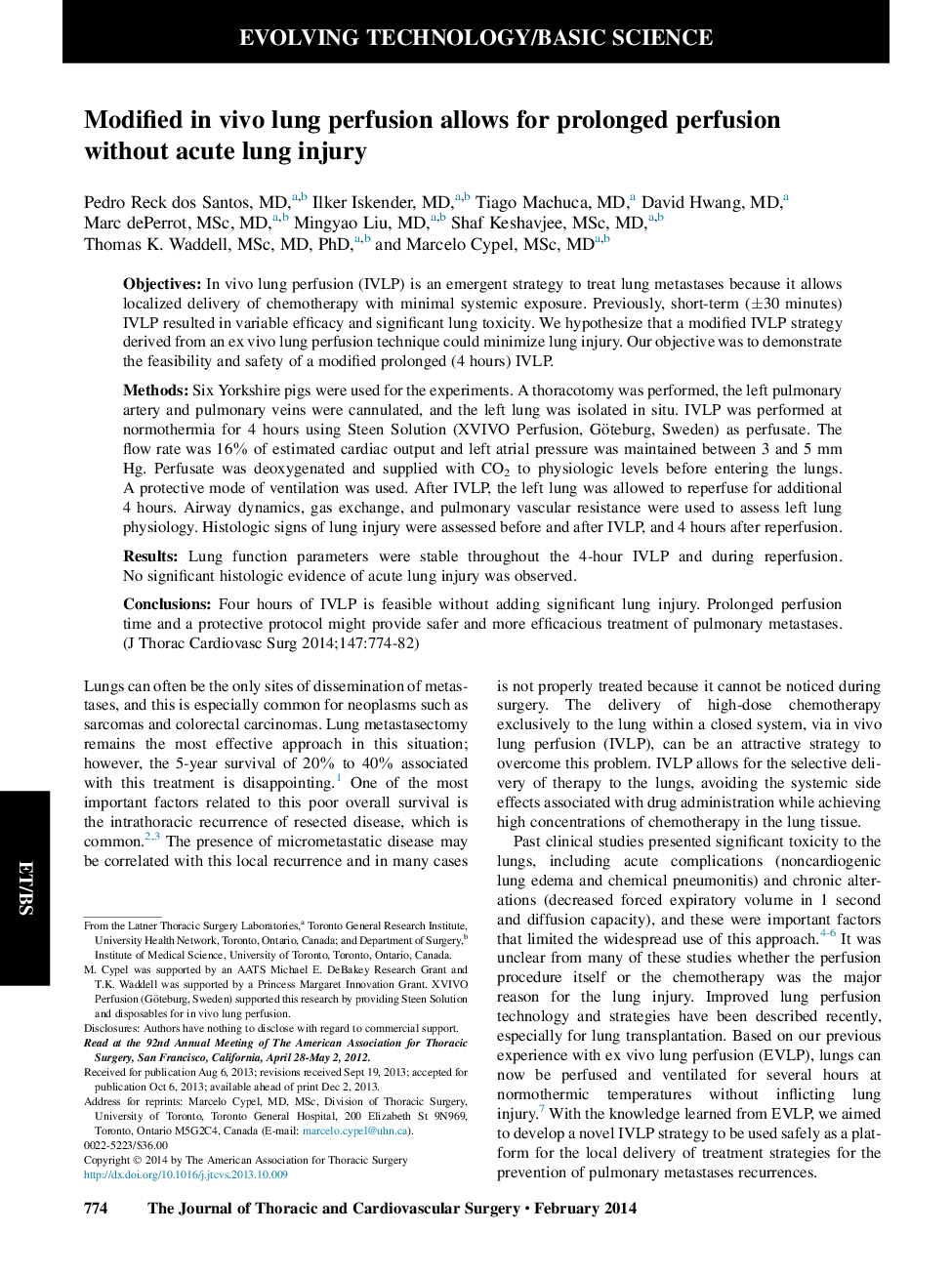| Article ID | Journal | Published Year | Pages | File Type |
|---|---|---|---|---|
| 2980239 | The Journal of Thoracic and Cardiovascular Surgery | 2014 | 9 Pages |
ObjectivesIn vivo lung perfusion (IVLP) is an emergent strategy to treat lung metastases because it allows localized delivery of chemotherapy with minimal systemic exposure. Previously, short-term (±30 minutes) IVLP resulted in variable efficacy and significant lung toxicity. We hypothesize that a modified IVLP strategy derived from an ex vivo lung perfusion technique could minimize lung injury. Our objective was to demonstrate the feasibility and safety of a modified prolonged (4 hours) IVLP.MethodsSix Yorkshire pigs were used for the experiments. A thoracotomy was performed, the left pulmonary artery and pulmonary veins were cannulated, and the left lung was isolated in situ. IVLP was performed at normothermia for 4 hours using Steen Solution (XVIVO Perfusion, Göteburg, Sweden) as perfusate. The flow rate was 16% of estimated cardiac output and left atrial pressure was maintained between 3 and 5 mm Hg. Perfusate was deoxygenated and supplied with CO2 to physiologic levels before entering the lungs. A protective mode of ventilation was used. After IVLP, the left lung was allowed to reperfuse for additional 4 hours. Airway dynamics, gas exchange, and pulmonary vascular resistance were used to assess left lung physiology. Histologic signs of lung injury were assessed before and after IVLP, and 4 hours after reperfusion.ResultsLung function parameters were stable throughout the 4-hour IVLP and during reperfusion. No significant histologic evidence of acute lung injury was observed.ConclusionsFour hours of IVLP is feasible without adding significant lung injury. Prolonged perfusion time and a protective protocol might provide safer and more efficacious treatment of pulmonary metastases.
